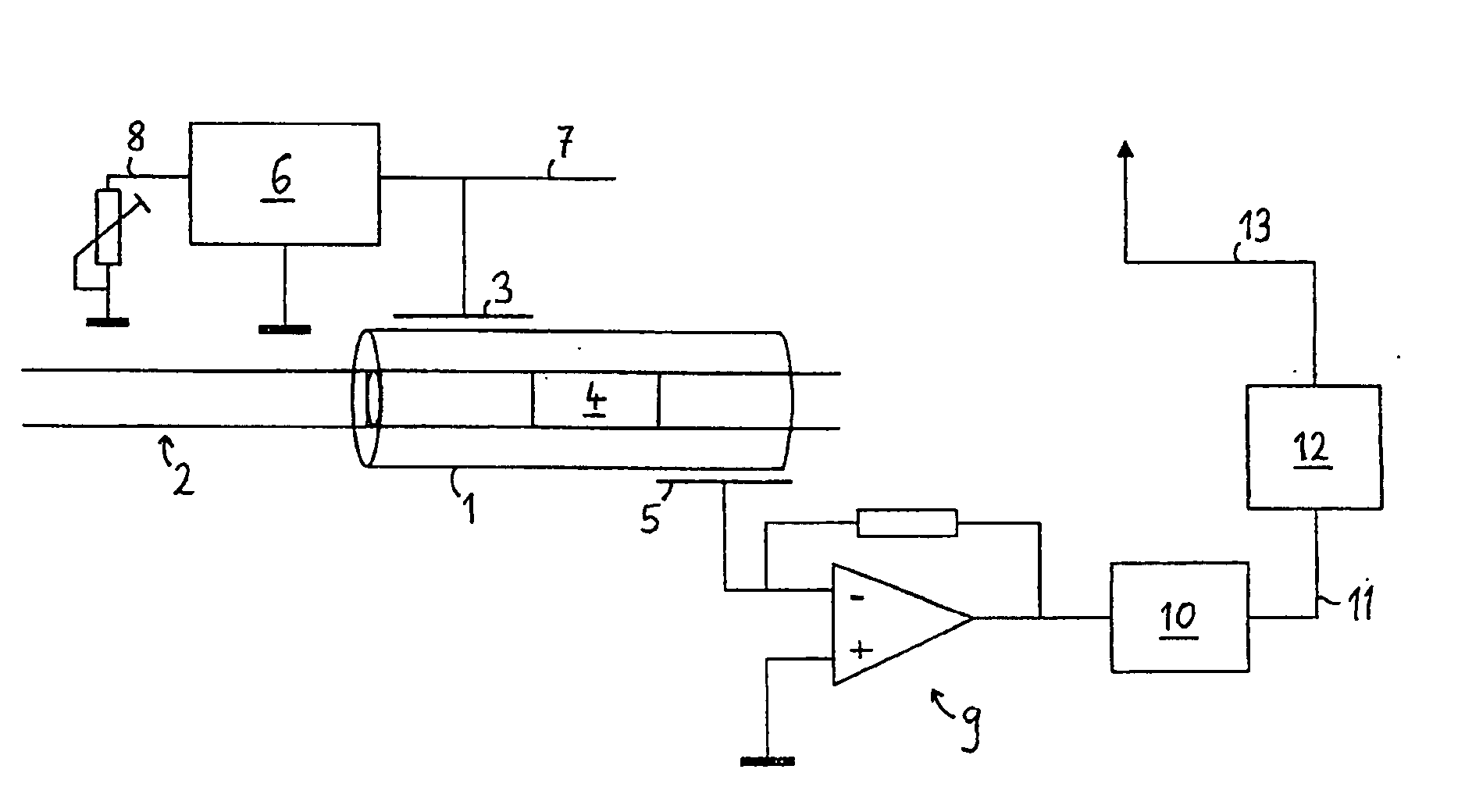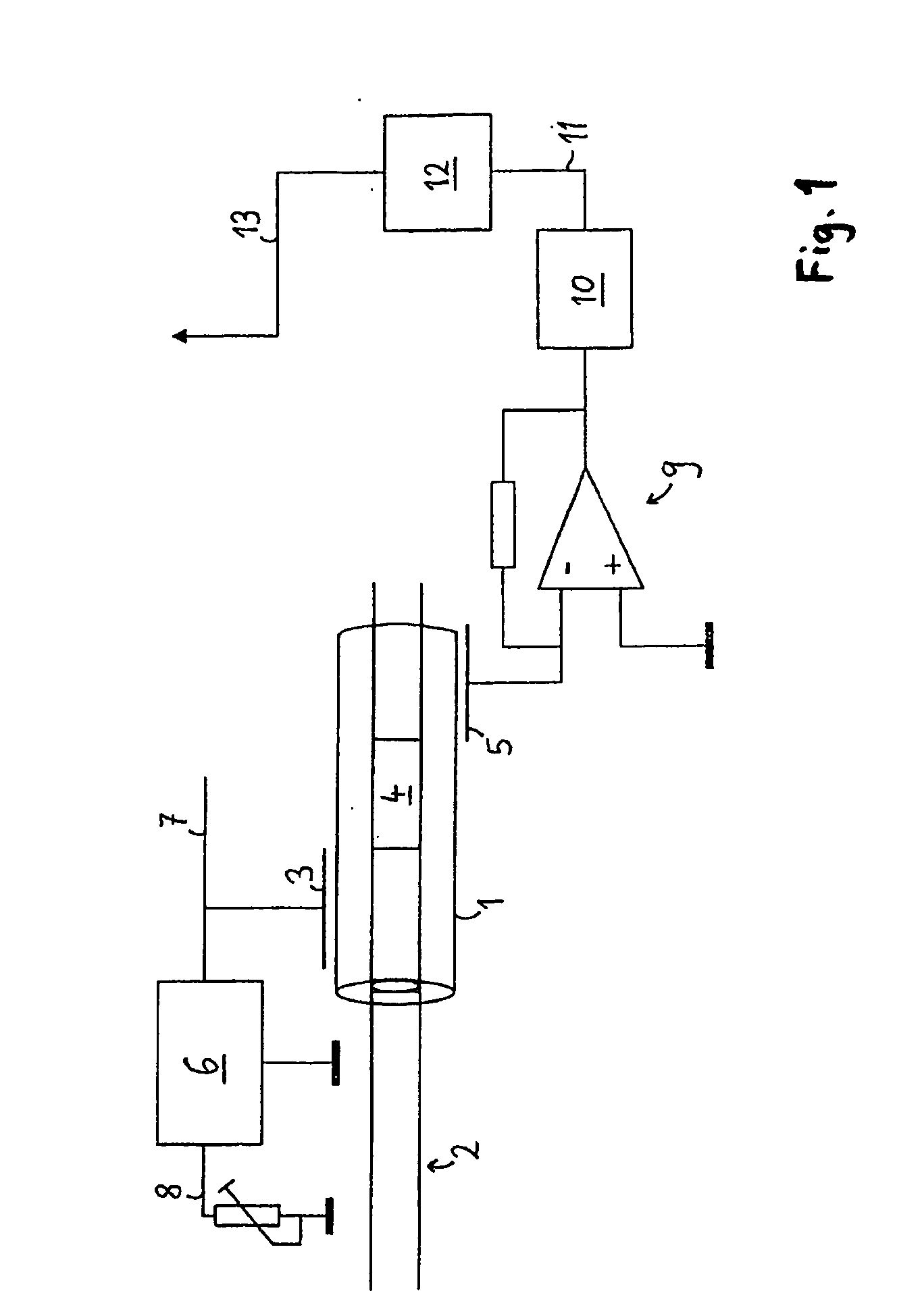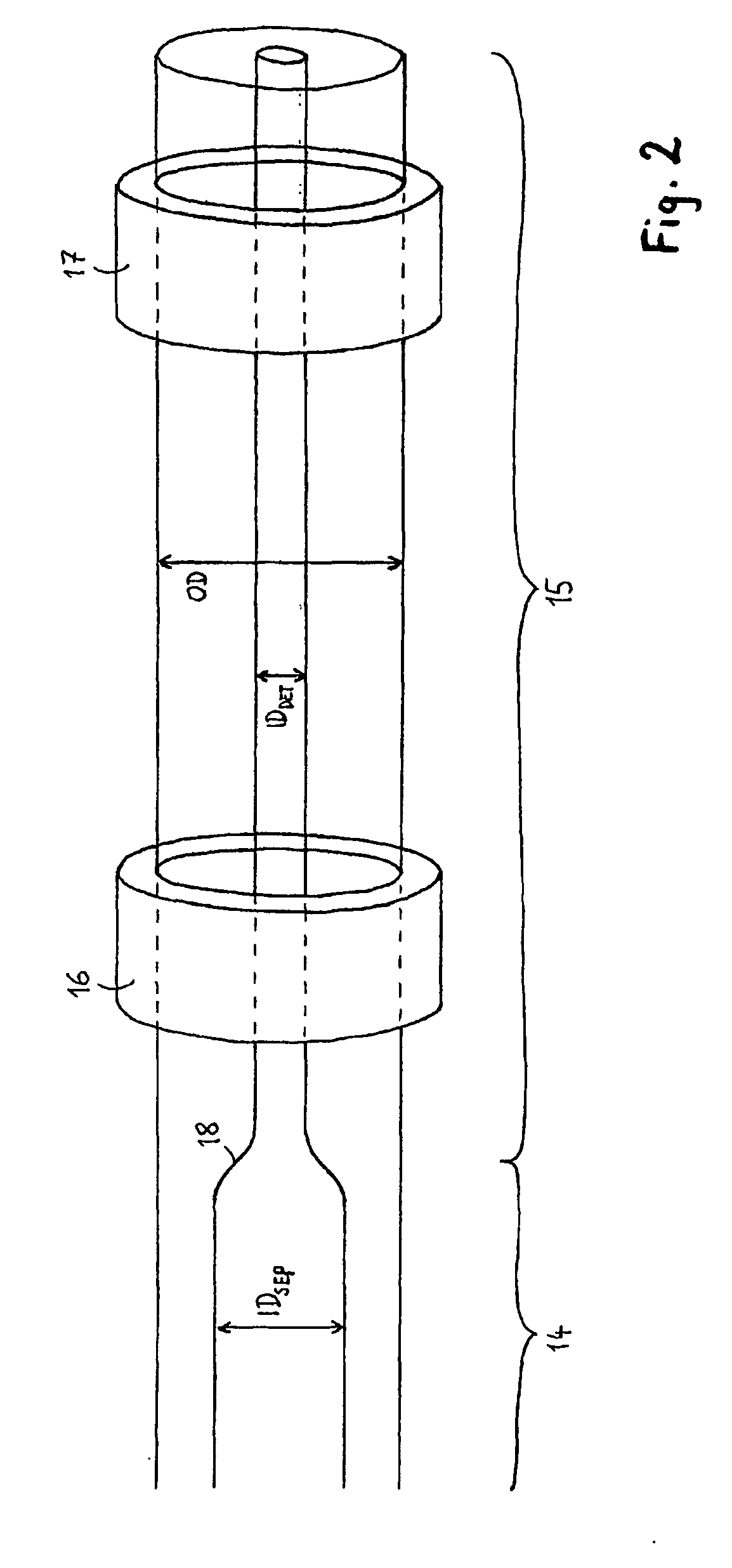Contactless detection cell with reduced detection channel cross-section
a detection cell and cross-section technology, applied in resistance/reactance/impedence, instruments, material analysis, etc., can solve problems such as affecting the quality of obtained results or spectra, and achieve the effect of increasing the sensitivity of a contactless detection cell
- Summary
- Abstract
- Description
- Claims
- Application Information
AI Technical Summary
Benefits of technology
Problems solved by technology
Method used
Image
Examples
Embodiment Construction
[0031]In FIG. 1, a measurement set-up comprising a contactless detection cell is depicted. The contactless detection cell 1 is adapted for detecting compounds that have migrated through a preceding separation flow path 2, whereby the separation flow path 2 might e.g. be part of a capillary electrophoresis (CE) system, or of a liquid chromatography (LC) system, etc. The contactless detection cell 1 comprises a transmitter electrode 3 that is adapted for applying an AC field to the detection volume 4, and a receiver electrode 5 that is adapted for detecting the AC current that passes through the detection volume 4. The transmitter electrode 3 and the receiver electrode 5 are arranged in an axial geometry, which means that they are spaced apart by a certain distance in the direction of the flow. The transmitter electrode 3 is connected to a high frequency (HF) AC power supply 6 that provides a HF AC voltage signal 7 to the transmitter electrode 3, whereby the frequency of the HF AC vol...
PUM
| Property | Measurement | Unit |
|---|---|---|
| inner diameter | aaaaa | aaaaa |
| inner diameter | aaaaa | aaaaa |
| frequency | aaaaa | aaaaa |
Abstract
Description
Claims
Application Information
 Login to View More
Login to View More - R&D
- Intellectual Property
- Life Sciences
- Materials
- Tech Scout
- Unparalleled Data Quality
- Higher Quality Content
- 60% Fewer Hallucinations
Browse by: Latest US Patents, China's latest patents, Technical Efficacy Thesaurus, Application Domain, Technology Topic, Popular Technical Reports.
© 2025 PatSnap. All rights reserved.Legal|Privacy policy|Modern Slavery Act Transparency Statement|Sitemap|About US| Contact US: help@patsnap.com



